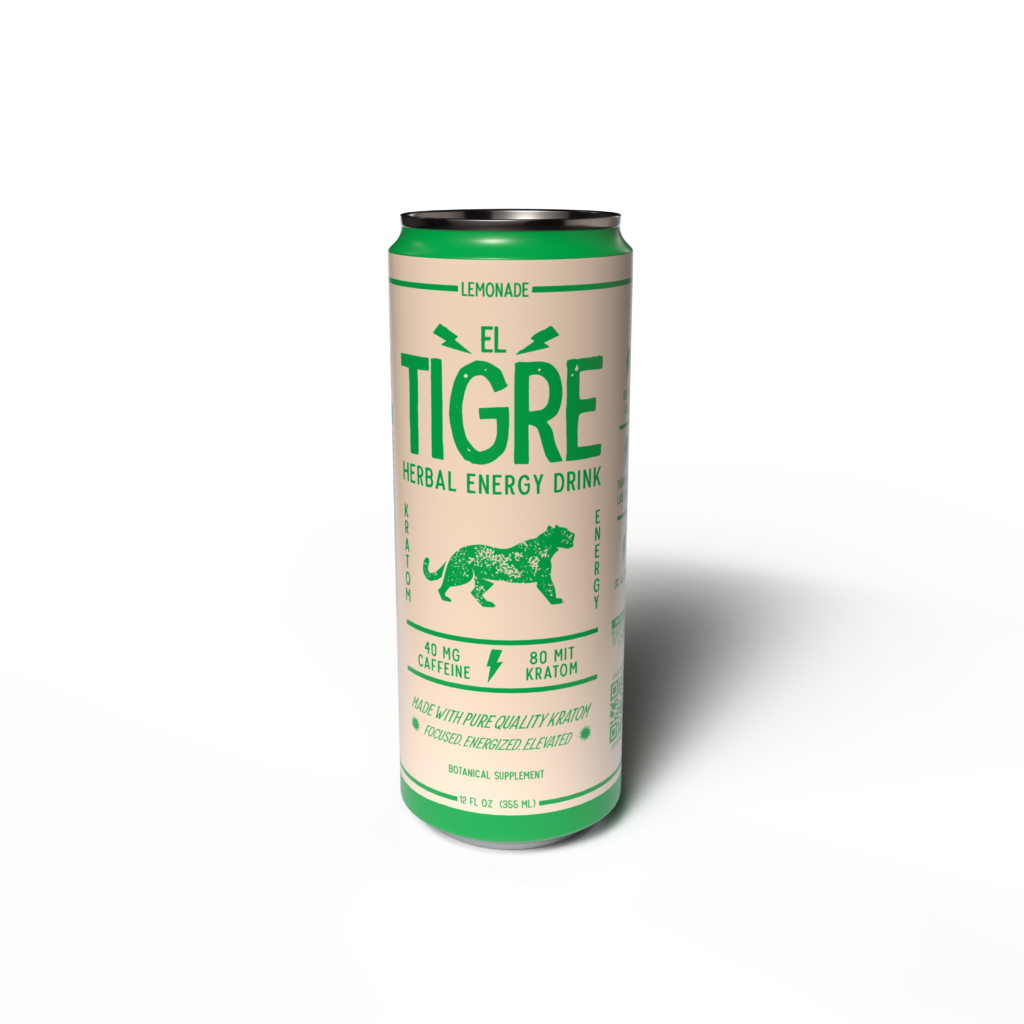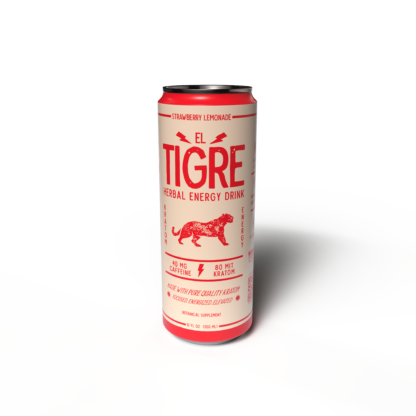Effects of Kratom on Creativity
Kratom, an herb native to Southeast Asia, has gained popularity for its energizing and mood-boosting effects. As a growing number of individuals explore its potential benefits, questions arise about its impact on creativity. This article delves into the relationship between kratom consumption and creative pursuits, examining its potential role in inspiring artistic expression and exploring the experiences of writers and artists who incorporate it into their creative processes.
Increased Focus and Concentration

Kratom’s stimulant properties, attributed to compounds like mitragynine, are believed to enhance mental alertness and focus. This increased concentration could potentially benefit creative endeavors by allowing individuals to immerse themselves more deeply in their work. Some users report that kratom helps them overcome mental blocks and access a state of flow, enabling them to produce original ideas and explore new creative avenues.
However, it’s important to note that individual responses to kratom can vary widely. Some may experience heightened creativity, while others might find their focus impaired or their thoughts scattered. Additionally, the potential for dependency and adverse effects associated with long-term kratom use should be carefully considered.
Ultimately, the impact of kratom on creativity is a complex and subjective matter. While it holds promise as a tool for some individuals, responsible experimentation and self-awareness are crucial for harnessing its potential benefits while mitigating potential risks.
Enhanced Sensory Perception
Kratom’s effects on creativity are multifaceted and depend on individual experiences. Some users report that kratom enhances sensory perception, leading to a heightened awareness of their surroundings and a richer flow of ideas. This increased sensitivity could inspire artistic expression in various forms, from painting and music to writing and dance.
The stimulating properties of kratom may also contribute to improved focus and concentration, allowing individuals to delve deeper into creative projects. By clearing mental clutter and promoting a state of flow, kratom might facilitate the generation of novel ideas and artistic breakthroughs.
However, it’s crucial to acknowledge that kratom can also have adverse effects, such as anxiety, insomnia, and nausea. These negative experiences could potentially hinder creativity and artistic productivity. Additionally, prolonged use of kratom can lead to dependency and tolerance, which may ultimately diminish its beneficial effects.
Therefore, exploring the potential of kratom for enhancing creativity requires a balanced approach that prioritizes responsible experimentation, self-awareness, and careful consideration of potential risks.
Mood Elevation and Inspiration
Kratom’s influence on mood is complex and can vary greatly depending on the individual and dosage. Some users report experiencing elevated mood, feelings of euphoria, and increased sociability, potentially leading to a more creative and inspired state. These positive effects may stem from kratom’s interaction with opioid receptors in the brain, which are also involved in regulating mood and pain perception.
However, other users might experience anxiety, restlessness, or even depression after consuming kratom. This highlights the importance of individual responses and responsible experimentation, as what works for one person may have a different effect on another.
Furthermore, long-term use of kratom can lead to tolerance and dependence, potentially disrupting mood stability and hindering creative expression in the long run.
Kratom Energy Drinks and Writing Process
Kratom, an herb gaining popularity for its stimulating effects, has sparked curiosity about its potential role in fostering creativity. This exploration delves into the experiences of writers and artists who incorporate kratom into their creative processes, examining how this herb might influence artistic expression.
Improved Flow State
Kratom’s stimulating properties are believed to enhance mental alertness and focus, potentially benefiting creative pursuits by allowing individuals to immerse themselves more deeply in their work. Some users report that kratom helps them overcome mental blocks and access a state of flow, enabling them to produce original ideas and explore new creative avenues.
However, it’s important to note that individual responses to kratom can vary widely. Some may experience heightened creativity, while others might find their focus impaired or their thoughts scattered. Additionally, the potential for dependency and adverse effects associated with long-term kratom use should be carefully considered.
Ultimately, the impact of kratom on creativity is a complex and subjective matter. While it holds promise as a tool for some individuals, responsible experimentation and self-awareness are crucial for harnessing its potential benefits while mitigating potential risks.
Overcoming Writer’s Block
Kratom’s potential influence on creative writing is a subject of ongoing exploration. Some writers find that the herb’s energizing effects and reported ability to induce a state of flow enhance their concentration and allow them to delve deeper into their work. The heightened sensory awareness sometimes associated with kratom might also inspire new ideas and perspectives.
However, it’s crucial to acknowledge the potential downsides. Kratom can cause anxiety, insomnia, and other adverse effects that could negatively impact writing productivity. Additionally, its potential for dependency raises concerns about long-term impacts on creativity and well-being.
Ultimately, the decision of whether or not to incorporate kratom into a writing process is a personal one that should be made with careful consideration of both potential benefits and risks.
Exploring Unconventional Ideas
The effects of kratom on creativity are multifaceted and depend on individual experiences. Some users report enhanced sensory perception, leading to a heightened awareness of their surroundings and a richer flow of ideas. This increased sensitivity could inspire artistic expression in various forms, from painting and music to writing and dance.
Kratom’s stimulating properties may also contribute to improved focus and concentration, allowing individuals to delve deeper into creative projects. By clearing mental clutter and promoting a state of flow, kratom might facilitate the generation of novel ideas and artistic breakthroughs.
However, it’s important to acknowledge that kratom can also have adverse effects, such as anxiety, insomnia, and nausea. These negative experiences could potentially hinder creativity and artistic productivity. Additionally, prolonged use of kratom can lead to dependency and tolerance, which may ultimately diminish its beneficial effects.
Therefore, exploring the potential of kratom for enhancing creativity requires a balanced approach that prioritizes responsible experimentation, self-awareness, and careful consideration of potential risks.
Kratom Energy Drinks in Artistic Expression
Kratom, an herb gaining recognition for its energizing properties, has sparked curiosity about its potential to influence creative expression. This exploration delves into the experiences of writers and artists who incorporate kratom into their creative processes, examining how this herb might shape artistic endeavors.
Stimulating Visual Art
Kratom’s stimulating effects, attributed to compounds like mitragynine, are believed to enhance mental alertness and focus. This heightened state of awareness could potentially benefit artistic pursuits by allowing individuals to immerse themselves more deeply in their work. Some artists report that kratom helps them overcome creative blocks and access a state of flow, enabling them to produce original ideas and explore new artistic avenues.
The visual arts are particularly susceptible to the influence of altered states of consciousness. Kratom’s potential to enhance sensory perception and evoke vivid imagery could translate into unique and expressive artwork. Imagine brushstrokes imbued with a heightened sense of color, texture, and form, or sculptures that capture the essence of dreamscapes.
However, it’s crucial to acknowledge that kratom’s effects can vary widely from person to person. Some artists might experience increased creativity and inspiration, while others could find their focus impaired or their thoughts scattered. Furthermore, long-term use of kratom carries the risk of dependency and potential adverse effects.
Ultimately, the relationship between kratom and artistic expression remains a complex and individual journey. Responsible experimentation and self-awareness are essential for artists who choose to explore the potential of this herb in their creative process.
Enhancing Musical Creativity
Kratom’s influence on creativity is multifaceted and depends on individual experiences. Some users report enhanced sensory perception, leading to a heightened awareness of their surroundings and a richer flow of ideas. This increased sensitivity could inspire artistic expression in various forms, from painting and music to writing and dance.
- The visual arts are particularly susceptible to the influence of altered states of consciousness.
- Kratom’s potential to enhance sensory perception and evoke vivid imagery could translate into unique and expressive artwork.
Kratom’s stimulating properties may also contribute to improved focus and concentration, allowing individuals to delve deeper into creative projects. By clearing mental clutter and promoting a state of flow, kratom might facilitate the generation of novel ideas and artistic breakthroughs.
However, it’s important to acknowledge that kratom can also have adverse effects, such as anxiety, insomnia, and nausea. These negative experiences could potentially hinder creativity and artistic productivity. Additionally, prolonged use of kratom can lead to dependency and tolerance, which may ultimately diminish its beneficial effects.

Therefore, exploring the potential of kratom for enhancing creativity requires a balanced approach that prioritizes responsible experimentation, self-awareness, and careful consideration of potential risks.
Influencing Performance Art
Kratom, an herb gaining recognition for its energizing properties, has sparked curiosity about its potential to influence creative expression. This exploration delves into the experiences of writers and artists who incorporate kratom into their creative processes, examining how this herb might shape artistic endeavors.
Kratom’s stimulating effects, attributed to compounds like mitragynine, are believed to enhance mental alertness and focus. This heightened state of awareness could potentially benefit artistic pursuits by allowing individuals to immerse themselves more deeply in their work. Some artists report that kratom helps them overcome creative blocks and access a state of flow, enabling them to produce original ideas and explore new artistic avenues.
The visual arts are particularly susceptible to the influence of altered states of consciousness. Kratom’s potential to enhance sensory perception and evoke vivid imagery could translate into unique and expressive artwork. Imagine brushstrokes imbued with a heightened sense of color, texture, and form, or sculptures that capture the essence of dreamscapes.
However, it’s crucial to acknowledge that kratom’s effects can vary widely from person to person. Some artists might experience increased creativity and inspiration, while others could find their focus impaired or their thoughts scattered. Furthermore, long-term use of kratom carries the risk of dependency and potential adverse effects.
Ultimately, the relationship between kratom and artistic expression remains a complex and individual journey. Responsible experimentation and self-awareness are essential for artists who choose to explore the potential of this herb in their creative process.

Ethical Considerations and Potential Risks
The use of kratom, an herb gaining popularity for its stimulating effects, raises ethical considerations and potential risks that warrant careful attention. While some individuals report experiencing enhanced creativity and focus after consuming kratom, others may encounter adverse effects such as anxiety, insomnia, or nausea. Furthermore, long-term use can lead to dependency and tolerance, potentially impacting both physical and mental well-being.
It is crucial to prioritize responsible experimentation and self-awareness when exploring the potential of kratom for creative purposes. Individuals should be fully informed about the potential risks and benefits before incorporating kratom into their creative process.
Ethical considerations also extend to the potential impact on artistic integrity. If kratom use significantly influences an artist’s work, transparency with audiences about its role is essential to ensure authenticity and informed interpretation of the artwork.
Addiction Potential
Kratom’s potential for addiction is a serious concern that must be addressed alongside its purported benefits. While some users may experience short-term positive effects on creativity, prolonged and frequent use can lead to dependence, characterized by withdrawal symptoms when kratom consumption ceases. This creates a cycle of reliance where individuals may feel compelled to continue using the herb to maintain their perceived creative edge or avoid unpleasant withdrawal effects.
The addictive potential of kratom stems from its interaction with opioid receptors in the brain, which are also involved in regulating pain, pleasure, and mood. Regular use can lead to tolerance, meaning higher doses are required to achieve the same effect. This can escalate into dependence, where the body becomes physically reliant on kratom for normal functioning.
It is crucial to emphasize that kratom should not be viewed as a harmless or risk-free tool for enhancing creativity. Individuals considering using kratom should carefully weigh the potential benefits against the serious risks of addiction and other adverse effects. Seeking guidance from healthcare professionals familiar with kratom’s pharmacology and potential for abuse is essential for making informed decisions about its use.
Side Effects and Health Concerns
Kratom, an herb gaining popularity for its energizing properties, raises ethical concerns and potential health risks that require careful consideration. While some individuals report experiencing enhanced creativity and focus after consuming kratom, others may encounter adverse effects such as anxiety, insomnia, or nausea. Long-term use can lead to dependence and tolerance, potentially impacting both physical and mental well-being.
Ethical considerations also arise regarding the potential influence of kratom on artistic integrity. If kratom use significantly affects an artist’s work, transparency with audiences about its role is essential to ensure authenticity and informed interpretation.
- Potential for Addiction: Kratom’s interaction with opioid receptors in the brain can lead to dependence and withdrawal symptoms, creating a cycle of reliance.
- Adverse Effects: Beyond addiction, kratom can cause anxiety, insomnia, nausea, and other health problems.
- Long-Term Health Impacts: The long-term effects of kratom use are not fully understood and may include potential damage to the liver or cardiovascular system.
It is crucial to prioritize responsible experimentation and self-awareness when exploring the potential of kratom for creative purposes. Individuals should be fully informed about the potential risks and benefits before incorporating it into their creative process.
Responsible Use Guidelines
Ethical Considerations and Potential Risks
The use of kratom for creative endeavors raises several ethical considerations and potential risks that must be carefully weighed:
* **Addiction:** Kratom’s interaction with opioid receptors in the brain can lead to dependence and withdrawal symptoms. This poses a risk of addiction, potentially compromising an artist’s well-being and long-term creative output.
* **Health Risks:** Beyond addiction, kratom can cause adverse effects such as anxiety, insomnia, nausea, liver damage, and cardiovascular issues.
These risks may impair an artist’s health and ability to create effectively.
* **Transparency and Authenticity:** If kratom use significantly influences artistic expression, transparency with audiences is crucial. Audiences deserve to understand the context of the artwork and how it was created. Omitting this information could be seen as misleading or compromising artistic integrity.
Responsible Use Guidelines:
For individuals considering using kratom for creative purposes, these guidelines are essential:
* **Informed Decision-Making:** Thoroughly research kratom’s effects, risks, and potential for addiction before experimenting with it. Consult with a healthcare professional familiar with kratom to understand the potential implications for your health and well-being.
* **Responsible Experimentation:** Start with small doses and carefully monitor your body’s response. Be aware of potential side effects and adjust usage accordingly. Avoid using kratom regularly or in high doses, as this increases the risk of dependence.
* **Self-Awareness:** Pay close attention to how kratom affects your creativity, mood, and overall well-being. Be honest with yourself about any negative impacts and be prepared to discontinue use if necessary.
* **Transparency:** If kratom significantly influences your creative process, be transparent with audiences about its role in your work. This fosters ethical artistic practice and allows for informed interpretation of the art.
Kratom energy that lasts longer
Melissa J Design
Racinne USA
- Why Sculptra Is Gaining Popularity In Surrey - June 29, 2025
- What’s The Worst Thing That Can Happen With Lip Fillers? - June 28, 2025
- What Is The Best Filler For The Temple Area - June 25, 2025

